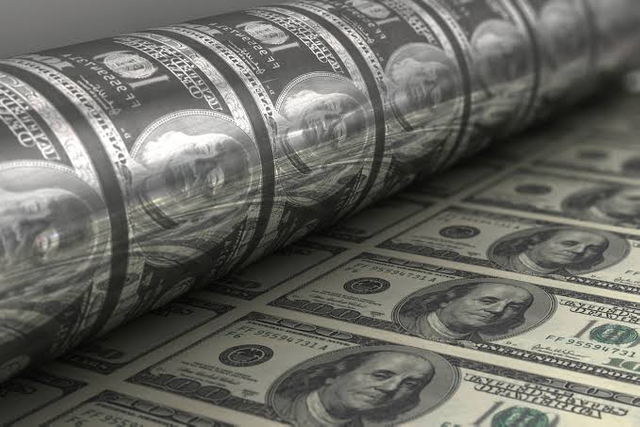Many
Open in app
Get started
CENTUS
Responses (14)
To respond to this story,
get the free Medium app.
Open in app
Sla
Sla
6 months ago
ОБЕЩАЛИ 100 ДОЛЛАРОВ ЗА РЕГИСТРАЦИЮ И НИЧЕГО НЕ ДАЛИ? ЗДЕСЬ ТОЖЕ ОБМАН?
22
валентин ключников
валентин ключников
6 months ago
Отличный проект -работаем !
26
1
Natalya Martinenko
Natalya Martinenko
6 months ago
Проект , который радует своими предложениями по профиту ! Присоединяйтесь !
24
Александр Гаврилко
Александр Гаврилко
6 months ago
Прекрасный проект . Выплаты идут ! Работаем !
17
egotri22
egotri22
4 months ago
23
Dont Miss this Project….! #CENTUS #xlm #stellar #debitcoin #BONUS #USD #BILLEX https://centus.one/
Chnadir
Chnadir
4 months ago
Good project
12
Jorge Rodriguez
Jorge Rodriguez
4 months ago
Very strong project try now is stable coin
11
Saintroling
Saintroling
2 months ago
Very good project
15
Kabirbd
Kabirbd
4 months ago
Hi
5
Daigerdavid
Daigerdavid
about 1 month ago
Knowing these theories, electronic money definitely provides us with great benefits, so the best investment with good returns is found in centus
11
Seigniorage — The Profit of Creating Money
CENTUS
CENTUS
Nov 9, 2019 · 3 min read
Image for post
Paper Currency Printing machine
Since the cost of producing fiat money is low, the face value of the currency can be much larger than its production cost. For instance, it costs 6 cents to print a United States (US) Federal Reserve note, regardless of its denomination. Hence, the printer of paper currency profits by creating more money. The value of money over its cost of production is called seigniorage.
There is some seigniorage in minting commodity monies as well — but not always. In 2013, the cost of minting a US penny was 2 cents and the cost to mint a nickel was a dime. However, when there is a profit, it is not nearly as great as it is for paper currency, since commodity money does have intrinsic value. Sometimes, governments increase their seigniorage profits by debasing their coins with cheaper metals; other times, the government will stop producing the coin, as the US did with the half-cent in 1857.
However, there must be some seigniorage for creating money for it to continue circulating as money; otherwise, if the metal is more valuable and it is economical to do so, the coins would be taken out of circulation and melted for its metal. For instance, in 1792, the Continental Congress’s first coinage act minted both gold and silver coins. However, the amount of gold in the coins was more valuable as bullion than it was as coins, so little gold was sold to the mint for coinage. And the silver dollars at that time could be exchanged for Spanish dollars at face value. Since the Spanish dollars had more silver, it was profitable to exchange the American silver dollars for the Spanish dollars, which were then melted down and sold to the mint. Although the metal in the penny and the nickel are more valuable than the face value of the coins, it probably would not be economical to collect enough coins, melt them down, then sell the metal.
Seigniorage is Greatest for Electronic Money
The greatest amount of seigniorage results from the electronic creation of money, since virtually any amount of money can be created electronically at virtually no cost.
In most countries, central banks have control over the creation and destruction of money. For instance, because of the credit crisis of 2008 and 2009, central banks all over the world were creating vast amounts of money by buying government securities with their newly created money, thereby trading debt securities, which cannot be used as a means of payment, into money, which can be. Buying government securities injects the new money into the economy by giving it to the traders who sold their debt securities. For instance, when the Federal Reserve, which is the central bank of the United States, purchases Treasuries from its primary dealers — mostly commercial or investment banks — it simply increases their reserves by the amount of the purchase price, allowing the banks to lend or invest the money in the general economy.
After the economies get going, then the central banks will lower the supply of money by reversing their procedure, by selling government securities to their primary dealers, which decreases the dealers’ reserves at the central bank, thereby reducing the supply of money to the economy. The money supply can also be decreased by increasing reserve requirements for the banks, or by raising the discount rate, which is the interest rate that banks must pay for interbank loans.
However, there is a limit to how much money governments can create before they hurt their economies through inflation. If money doesn’t have a stable value, then people lose faith in it as a medium of exchange, and especially as a store of value, with dire consequences for the economy. This is why governments are mostly financed with taxes, even though taxes are unpopular.

